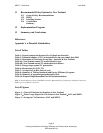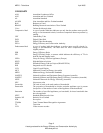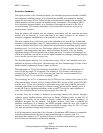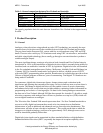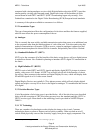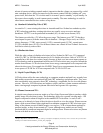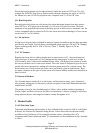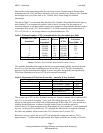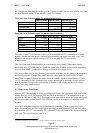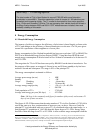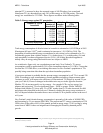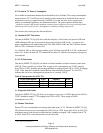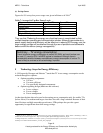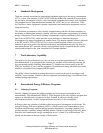MEPS − Televisions April 2005
Page 10
A study produced for the Energy Efficiency and Conservation Authority by
Wise Analysis Ltd
Plasma and rear projection sets use approximately double the power of CRT type TVs. For
example the NAEEEC Store Survey measurements showed a mean-in-use power of 156.5W
for Plasma sets, and 150.4W for projection sets, compared with 79.1W for CRT sets.
(iii) Rear Projection
Rear projection televisions are wide-screen televisions that beam images from three picture
tubes (CRTs) or LCD projectors to the back of a 102 cm to 150-plus cm screen. The main
attraction of rear projection televisions is that they provide a wide-screen or cinematic view for
a more comparable price to plasma or LCD wide-screen television technologies. These screens
can be in the 4:3 or 16:9 format.
(iv) Set top boxes
Set top boxes for conversion of digital to analogue signals are similar to the decoders presently
used by Sky and Telstra. Typical energy consumptions range between 12W and 17W. Standby
figures would typically be 8 to 10W or less (see Table 7). Standby figures of 2W are
achievable.
2.3.2 TV Formats
Regular televisions have a width to height ratio (or aspect ratio) of 4:3, whereas widescreen
televisions have an aspect ratio of 16:9, making the unit almost twice as wide as it is high. A
VCR normally shows videos in the standard format, while a DVD player has options to enable
the user to watch movies in wide-screen format. The wide-screen is designed to give the user a
greater television experience by making the television appear more like a cinema screen. The
actual screen size of wide-screen televisions varies and usually starts at around 66cm. There
are many variations on the types of wide-screen televisions available and these are described in
detail overleaf.
2.4 Sources of Product
New Zealand imports totally all of its televisions, and has done for many years. Australia is
also primarily an importer of televisions, with the exception of one brand Matsushita that still
manufactures in NSW.
The primary source for New Zealand supply is China, with a smaller number originating in
Europe, Japan, and Korea. However the place of manufacture is diverse, leading to televisions
being imported from a wide range of countries, mainly throughout Asia.
3 Market Profile
3.1 All Television Types
Television manufacturing and assembly in New Zealand finally ceased in 1990-91 with Fisher
& Paykel, the licensees for Panasonic being the last. Colour televisions first became readily
available in New Zealand in 1974 to coincide with the country’s hosting of the 1974
Commonwealth Games (black and white TV transmission was first introduced in New Zealand
in 1960).



